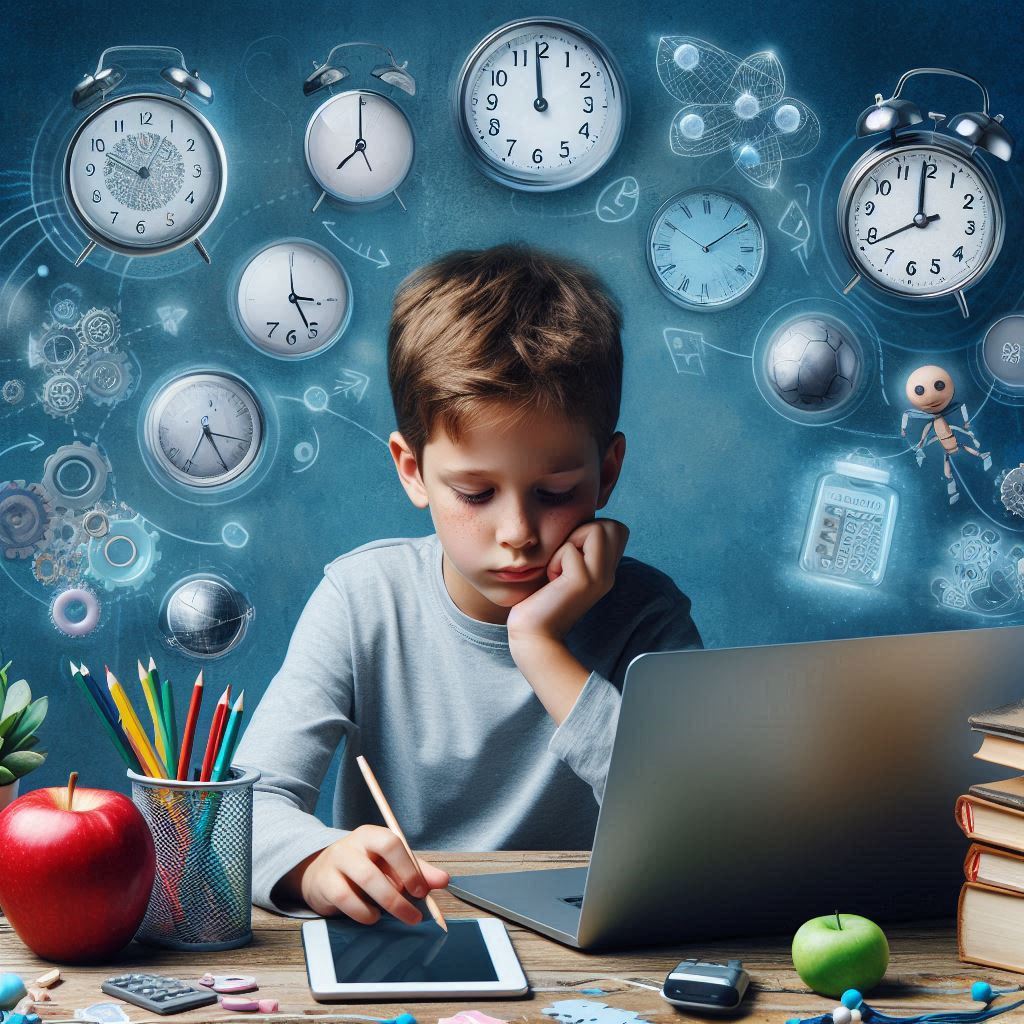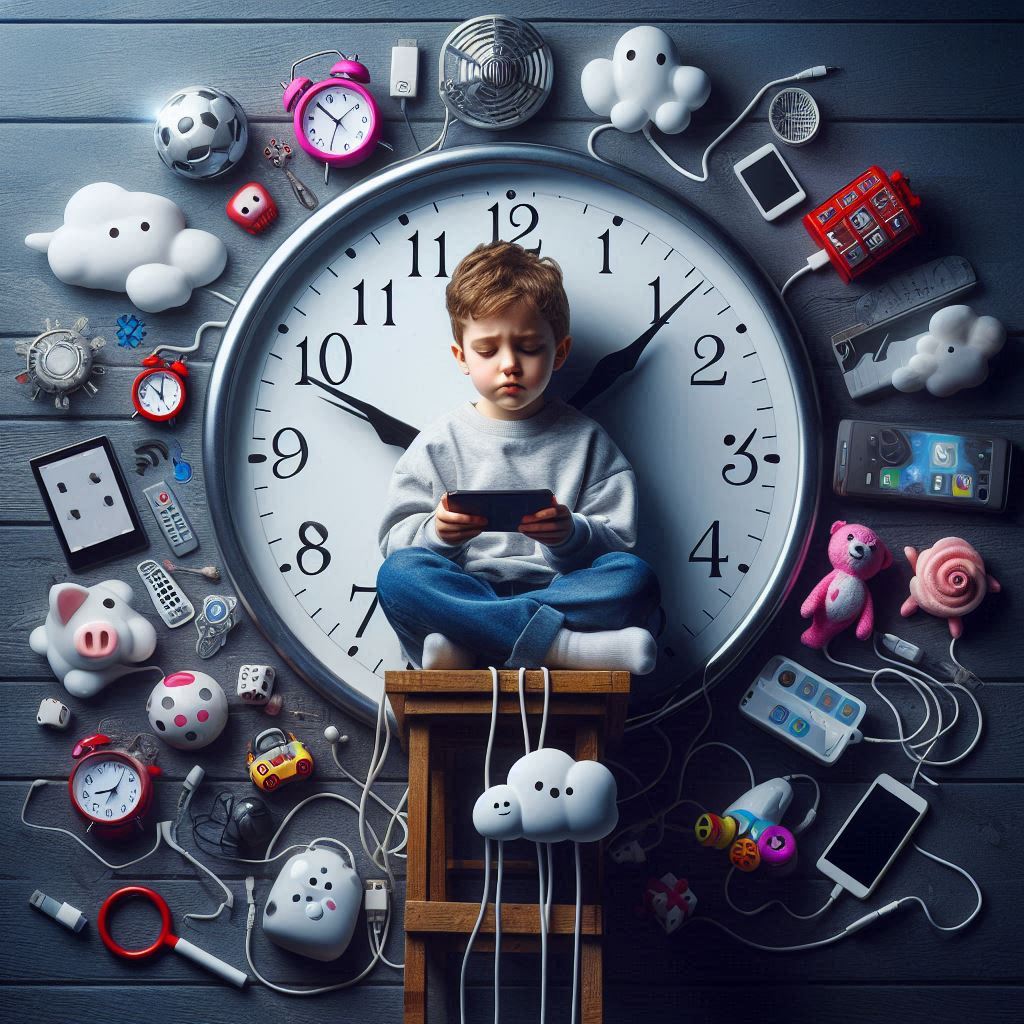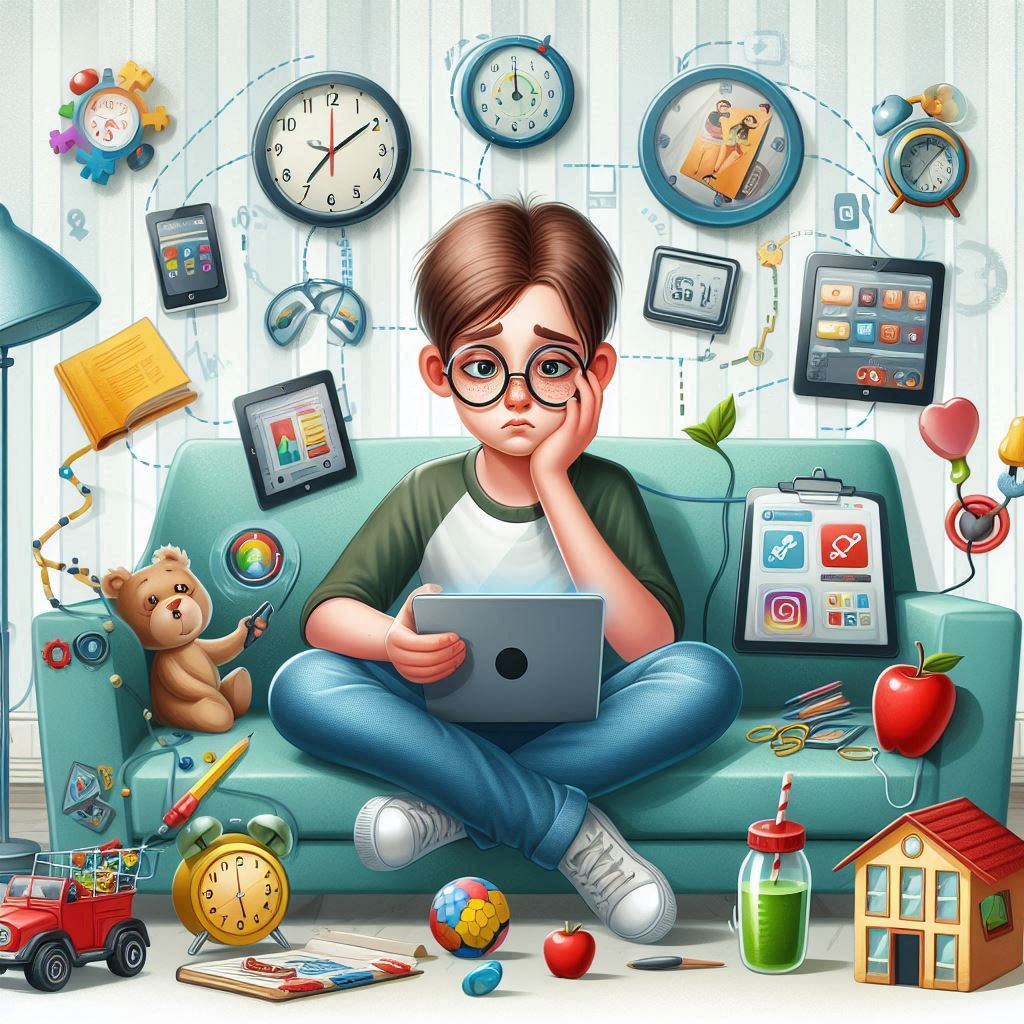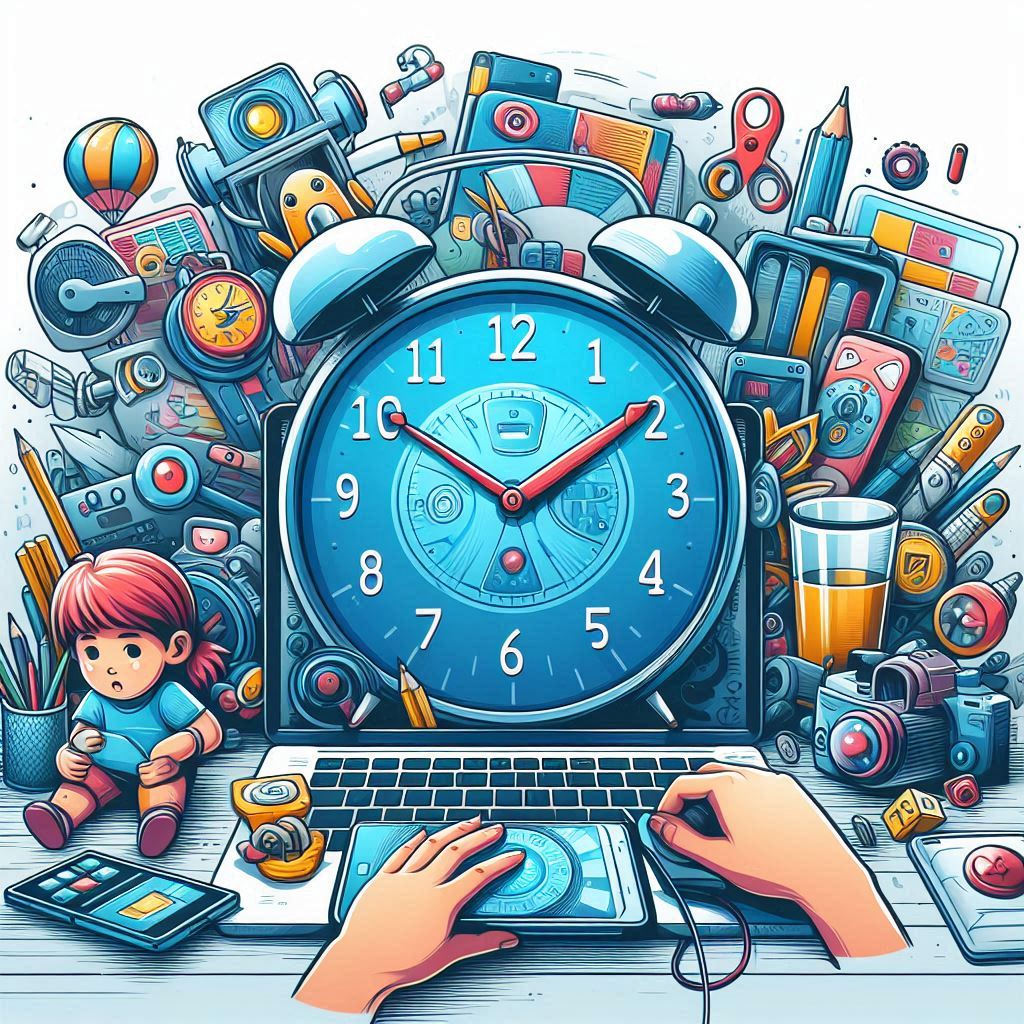In today’s digital age, gadgets are an integral part of life, especially for children. From smartphones and tablets to computers and video game consoles, children are surrounded by technology. These devices can provide educational opportunities, entertainment, and ways to stay connected with friends and family. However, concerns are growing about how much time children should be spending on gadgets and whether prolonged use can affect their physical and mental health.
As parents and caregivers, it’s crucial to find a balance between the benefits of technology and the potential risks of excessive screen time. In this article, we will explore the impacts of gadget use on children’s health, discuss how much screen time is appropriate for different age groups, and provide tips on managing gadget use in a healthy way.
Understanding the Impacts of Gadget Use on Children’s Health
Before we dive into how much time is appropriate, it’s essential to understand how excessive gadget use can impact a child’s health. These impacts are both physical and psychological and can affect a child’s development in various ways.

1. Physical Health Effects
Spending too much time on gadgets can lead to a variety of physical health issues. Some of the most common include:
- Eye Strain and Vision Problems: Prolonged use of screens can cause digital eye strain, also known as computer vision syndrome. This can result in symptoms like dry eyes, blurred vision, and headaches. Children who spend a lot of time staring at screens are also at an increased risk of developing myopia (nearsightedness).
- Poor Posture: Using gadgets often means sitting for extended periods in positions that are not good for the body. Children might slouch or hunch over their devices, which can lead to poor posture, back pain, and musculoskeletal problems over time.
- Sleep Disruption: The blue light emitted by screens can interfere with the production of melatonin, the hormone that regulates sleep. Using gadgets, especially before bedtime, can make it harder for children to fall asleep and reduce the quality of their sleep. Poor sleep can, in turn, affect mood, behavior, and cognitive function.
- Reduced Physical Activity: When children spend a lot of time on gadgets, they are less likely to engage in physical activities. This sedentary behavior can contribute to weight gain, reduced fitness levels, and an increased risk of obesity and related health issues.
2. Mental and Emotional Health Effects
Gadget use can also have a significant impact on a child’s mental and emotional well-being. Some of the potential risks include:
- Decreased Attention Span: Studies suggest that excessive gadget use, especially involving fast-paced apps and games, can contribute to shorter attention spans and difficulties focusing on tasks. Constant stimulation from gadgets can make it harder for children to engage in activities that require sustained attention, such as reading or completing homework.
- Social and Emotional Development: While gadgets can help children stay connected with others, too much screen time can reduce opportunities for face-to-face interactions, which are crucial for developing social and emotional skills. Children who spend more time on gadgets may struggle to build strong relationships or understand social cues.
- Increased Anxiety and Depression: Some studies have linked excessive screen time, particularly on social media platforms, to increased levels of anxiety, depression, and feelings of loneliness. Constant exposure to unrealistic images and negative content online can contribute to low self-esteem and mental health issues.

How Much Screen Time is Appropriate for Different Age Groups?
To help parents and caregivers determine how much time children can spend on gadgets without harming their health, organizations such as the American Academy of Pediatrics (AAP) and the World Health Organization (WHO) have established guidelines for appropriate screen time based on a child’s age.
1. Children Under 18 Months
For children under 18 months of age, the AAP recommends no screen time at all, except for video chatting with family members. At this age, babies’ brains are rapidly developing, and they learn best through direct interaction with their caregivers and the world around them, rather than through screens.
2. Children Aged 18 to 24 Months
For children between 18 and 24 months, limited screen time can be introduced, but it should be high-quality content, such as educational programs specifically designed for toddlers. Parents should co-view the content with their child, helping them understand and engage with what they’re watching.
3. Children Aged 2 to 5 Years
For preschool-aged children (2 to 5 years), the AAP recommends limiting screen time to one hour per day of high-quality programming. During this time, parents should continue to co-view content with their children to ensure they understand what they are watching and can apply the lessons to the real world.
4. Children Aged 6 Years and Older
For children aged 6 years and older, the AAP advises that parents place consistent limits on screen time to ensure that it doesn’t interfere with essential activities, such as sleep, physical activity, and social interaction. While there is no specific recommended time limit for this age group, most experts suggest limiting screen time to two hours or less per day, not including school-related use.

Balancing Screen Time with Healthy Habits
While screen time is an inevitable part of modern life, it’s important to ensure that children are engaging in a variety of activities that promote their overall development. Here are some tips for balancing screen time with other healthy habits:
1. Encourage Physical Activity
Physical activity is crucial for children’s physical and mental health. The WHO recommends that children aged 5 to 17 engage in at least 60 minutes of moderate to vigorous physical activity each day. Encourage your child to participate in sports, outdoor play, or other activities that get them moving.
To balance screen time with physical activity, consider setting up a schedule that includes designated times for exercise, such as going for a family walk after dinner or playing outside during breaks from homework.
2. Promote Face-to-Face Interactions
In-person interactions are essential for developing social and emotional skills. Encourage your child to spend time with friends and family members in person rather than relying solely on digital communication. For younger children, playdates or family activities like board games can provide opportunities for social engagement.
For older children and teens, it’s important to encourage participation in group activities, such as team sports, clubs, or volunteer work, which allow them to practice communication and teamwork.
3. Create Tech-Free Zones and Times
Establishing boundaries around screen use can help create a healthier balance between gadget time and other activities. Consider setting up tech-free zones in the house, such as the dining room or bedrooms, where screens are not allowed. This can help promote family interaction during meals and improve sleep quality by keeping gadgets out of the bedroom.
Additionally, implement tech-free times, such as during meals, before bedtime, or during family outings. These breaks from screen use can help children engage in more meaningful activities and improve their focus and attention.
4. Encourage Mindful Use of Gadgets
Help your child become more mindful of how they are using their gadgets. Instead of passively consuming content, encourage them to use technology in ways that promote learning, creativity, and connection. For example, children can use gadgets to research topics they’re interested in, create digital art or music, or video chat with relatives.
Mindful use also involves taking regular breaks from screens. The 20-20-20 rule is a helpful guideline: every 20 minutes, encourage your child to take a 20-second break and look at something 20 feet away to reduce eye strain.
5. Be a Role Model
Children learn a lot from observing their parents’ behaviors. If you want your child to develop healthy gadget habits, it’s important to model those habits yourself. Make an effort to limit your own screen time, especially when spending time with your child. Show them how to balance technology with other activities, such as reading, exercising, or enjoying time outdoors.
6. Have Open Conversations About Gadget Use
It’s important to have regular conversations with your child about their gadget use. Discuss the potential risks of excessive screen time and the importance of balancing technology with other activities. Ask your child how they feel about their screen time and whether they notice any negative effects, such as difficulty sleeping or focusing.
By having open conversations, you can work together to set healthy limits that meet your child’s needs and help them develop a positive relationship with technology.

In today’s world, gadgets are an integral part of a child’s life, and finding the right balance between screen time and other activities is essential for their overall well-being. While technology offers many benefits, excessive gadget use can negatively affect a child’s physical and mental health, particularly in terms of vision, posture, sleep, and social development.
By following age-appropriate guidelines for screen time, encouraging physical activity, promoting face-to-face interactions, and setting boundaries around gadget use, parents can help their children develop healthy habits that support both their growth and well-being. Ultimately, the key is not to eliminate gadgets entirely but to ensure that they are used in a balanced and mindful way that allows children to thrive.
